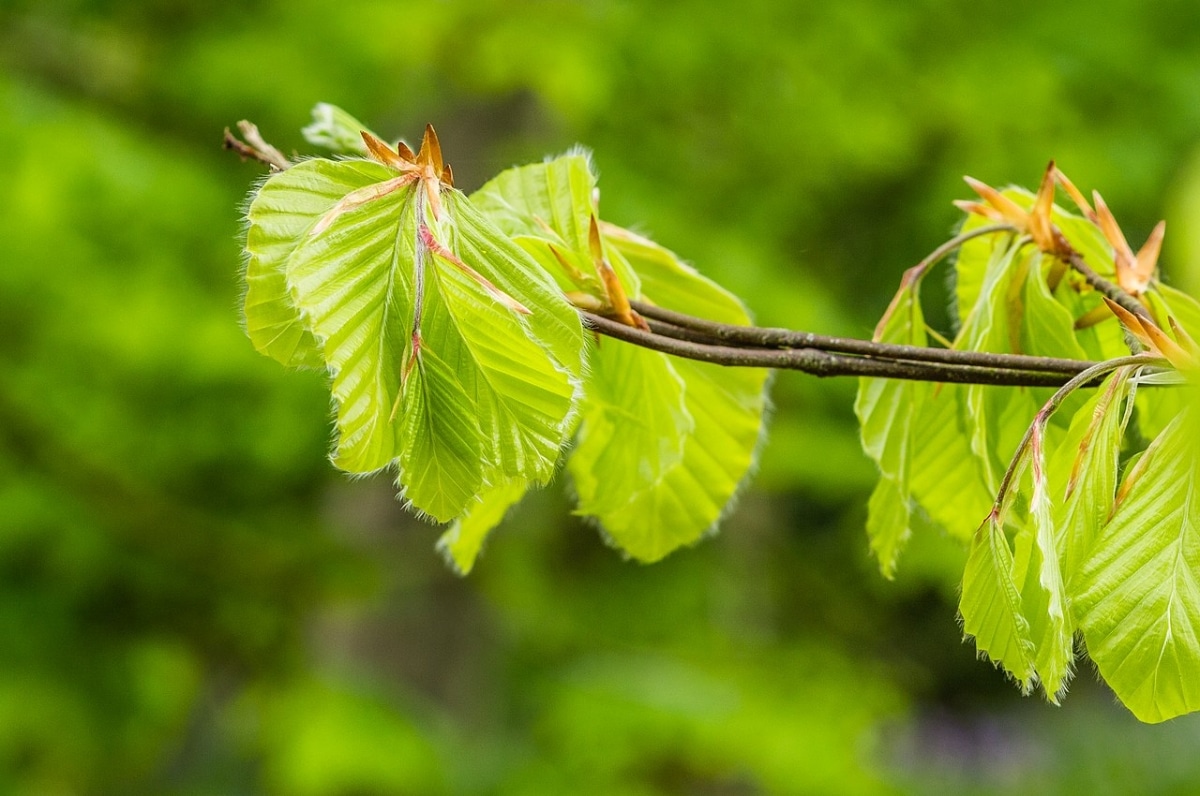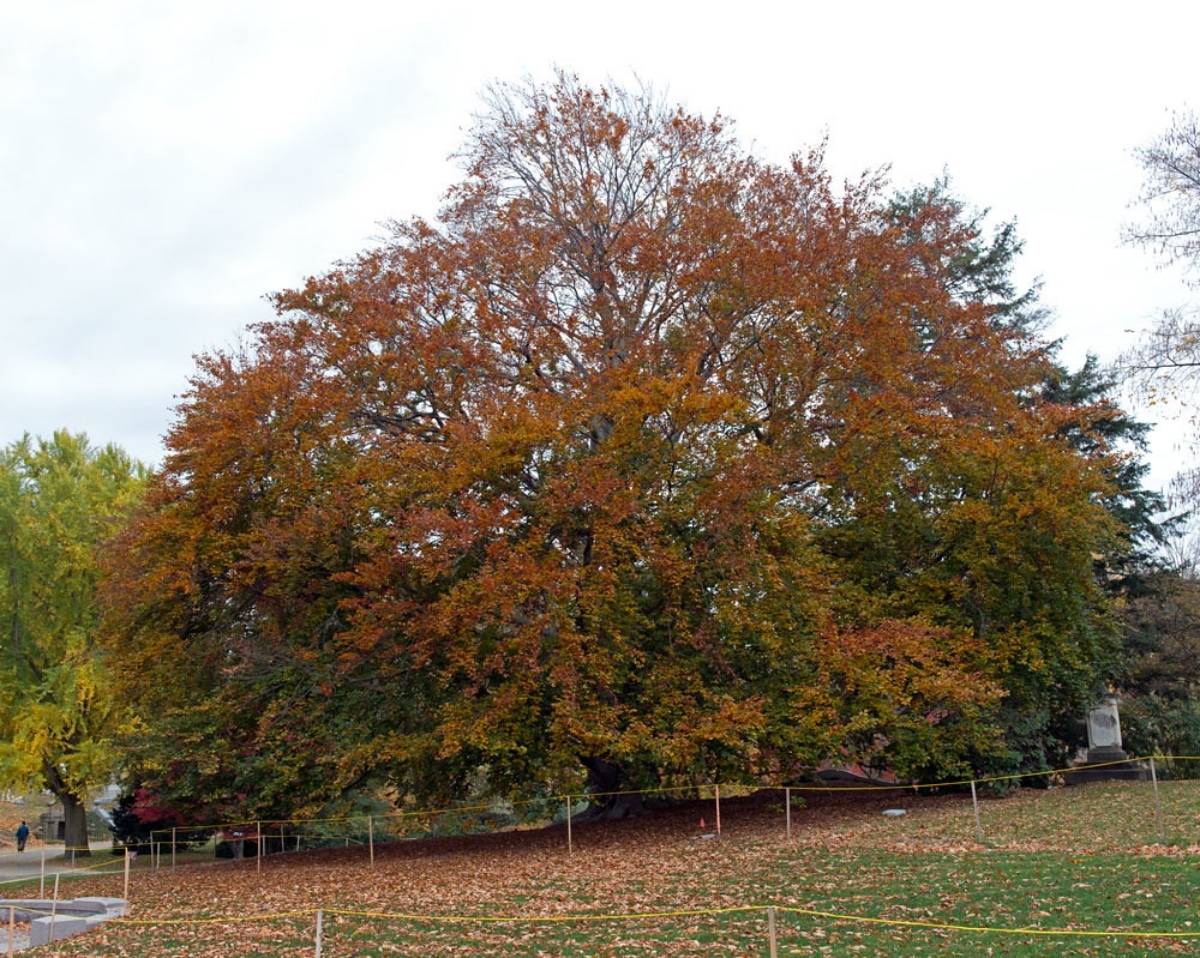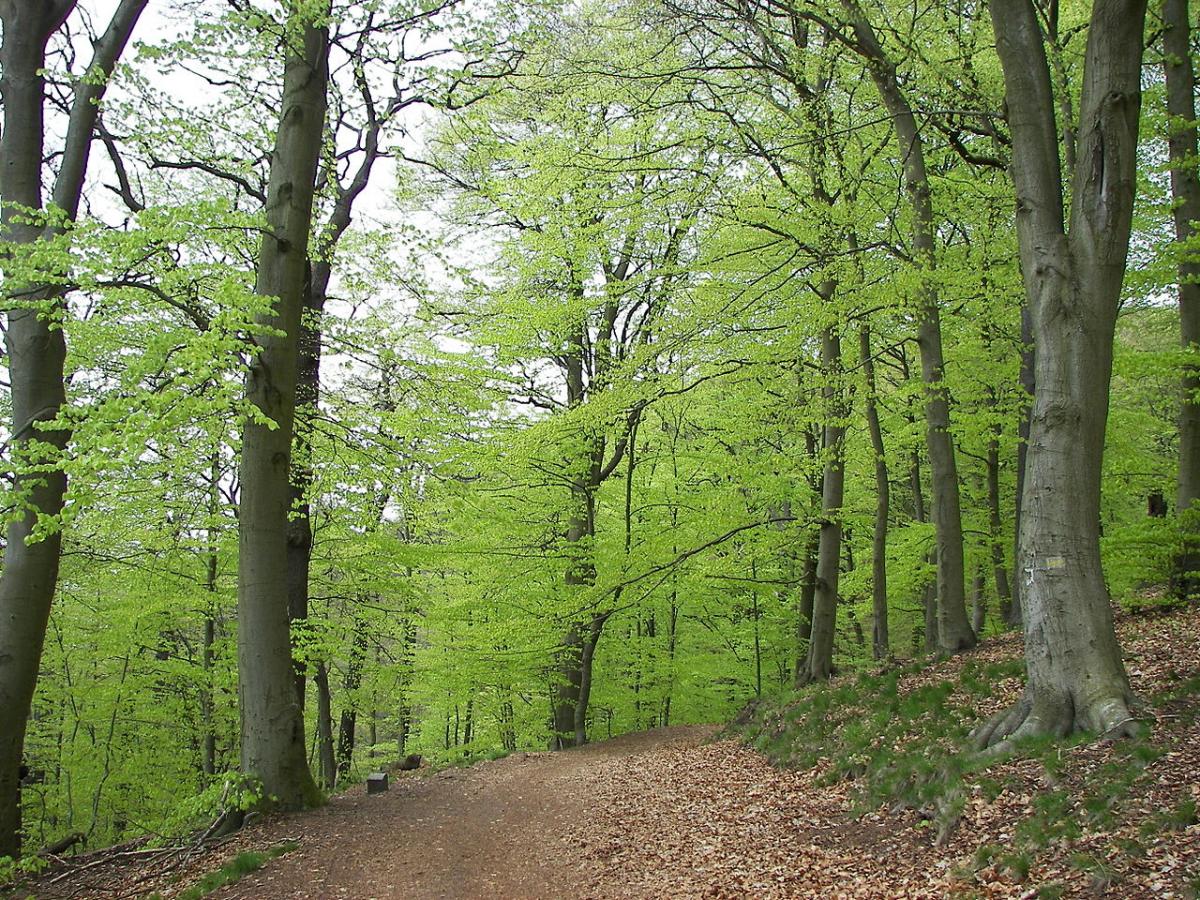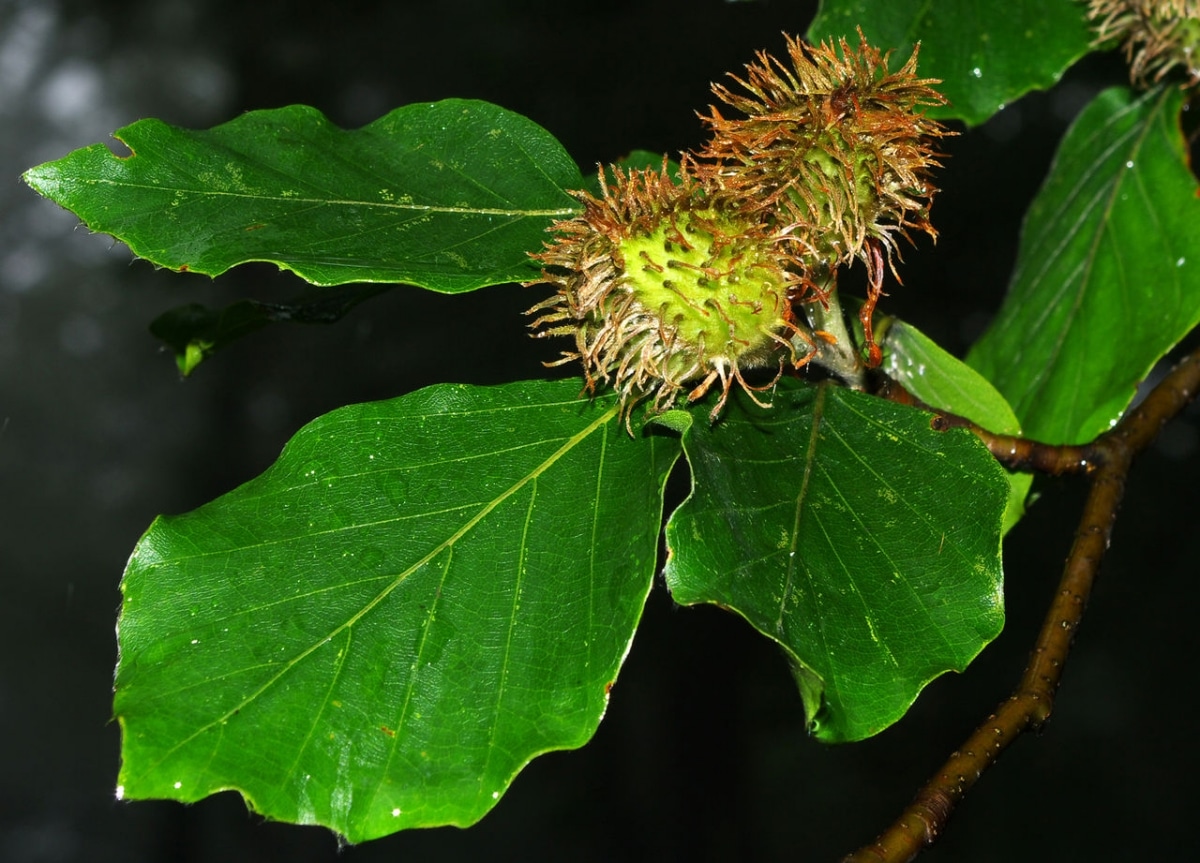
Image - Wikimedia / Dominicus Johannes Bergsma
The beech is one of the deciduous trees that form a type of European forest of great beauty and majesty.: the beech forest. This plant, which takes its time to grow, has a fairly long life expectancy of about 300 years; yes, of course, if the weather continues to be kind to her and she does not suffer from any serious problem.
It is not the type of tree that should be placed in a small garden, but the truth is that in those that are large it can become a specimen worth admiring.
What type of tree is the beech?

Image - Flickr / Plant Image Library
The beech, whose scientific name is Fagus sylvatica, It is a deciduous tree whose maximum height can reach 40 meters.. Its trunk is straight and robust, with smooth bark, and usually branches at a great distance from the ground. Its crown is rounded if it grows away from other trees, otherwise it becomes narrower and more irregular, which happens, for example, in the forest.
The leaves are simple, oval, and green, although they change color in autumn before falling.. During that season, they stop being fed and turn yellowish and then brown. Also, you have to know that, around a beech trunk, it is difficult for something to grow, since its crown prevents enough light from reaching the ground.
It is a monoecious species, that is, both male and female flowers are found on the same specimen. The former sprout in groups of 3-4 from a short peduncle, and are yellowish; the latter, on the other hand, also sprout in groups, but they do so on a long and slightly hanging peduncle.
Beech varieties and cultivars
The beech is a tree that in itself is very beautiful, but nowadays varieties and cultivars are sold that are even more decorative, if possible, such as these:
- Fagus sylvatica var asplenifolia: its leaves are totally different from those of the common beech: they are elongated, and have very jagged edges.
- Fagus sylvatica var atropurpurea: as its name suggests, it has purple leaves. But beware: during the summer they can be green-reddish.
- Fagus sylvatica var pendula: It is a variety with a weeping appearance.
- Fagus sylvatica var. tortuous: it is a variety that has a tortuous trunk, visible in adult specimens (it is more difficult to see in young ones).
- Fagus sylvatica 'Roseomarginata': It is a tree with dark green leaves with pink margins.
What is the name of the beech fruit?
The fruit has a rounded shape and opens into four valves, revealing between 1 and 3 seeds, the most common being 2, which are tetrahedron-shaped and edible. These are known by the name of beech mast.
Where does the beech tree grow?

Image – Wikimedia/Nikanos
The beech is a tree that grows wild in regions of Europe that have temperate climates and cool, fertile soils. We can find it in Greece, Sweden, Norway, Germany (as in the Black Forest), or even in Spain. In our country, it is worth mentioning the Irati Forest in Navarra, where it shares a habitat with Abies alba (firs).
It is a plant that does not tolerate extreme heat or drought. For this reason, we can only see healthy and really beautiful specimens in those areas where temperatures remain mild in summer, and where it also rains frequently.
What uses does it have?
The beech clearly has a use ornamental. Although, as we have said, it is a large tree that needs a lot of space, it is very decorative; so much so that the ideal is to plant it isolated, away from other plants that may bother it.
Another important use is edible. Beechnuts can be consumed without problem, but they are also used as feed for livestock.
How to take care of the beech?

Image – Wikimedia/Unai.mdldm // Fagus sylvatica 'Asplenifolia'
It is a slow-growing tree that, no matter how much we want to have it, it will be very important to keep in mind that it does not tolerate extreme heat. From my own experience, I can tell you that if temperatures remain between 20 and 35ºC, with air humidity above 50% for weeks, even if you put it in the shade, without any sun, you will see how its leaves they burn and die.
That is why, really, it makes no sense to buy a plant that is going to have serious difficulties to live. It will be very demanding, and apart from that, the care given to it will not always be enough.
Anyway, I'm going to tell you what are the general care What do you have to give him?
Location
The most recommended is that in addition to having it outdoors, put it in the sun as long as it is a plant that they have in the nursery in a sunny place, otherwise it is best to put it in semi-shade and gradually get it used to the sun.
Now, if what you have is a seedling beech, the ideal is to start by putting it in the shade. In the wild, the seeds germinate under the forest canopy, and as they grow and gain height, they gradually become accustomed to direct sun. So do not be in a hurry to expose it to the direct light of the star king; she will do it alone.
Earth
As it requires soils rich in organic matter and with good drainage, If you are going to grow it in a pot for a while, I recommend planting it in one with soil for acid plants (for sale). here); and if it is going to be in soil, it is very important that you make sure that the soil is fertile, spongy, and with good drainage.
Planting in clay soils should be avoided., since these are very heavy and, therefore, they become very compact, making it difficult for air to circulate between the granites that form it. In addition, the beech would have iron chlorosis, since although the clay soil contains iron, it is not available for the roots.
Irrigation and fertilizer
In its places of origin, the beech tree lives in areas where more than 1000 mm of precipitation falls per year. Therefore, it will have to be watered if it rains less, or if it is in a pot. How often? Well it depends, but it is important that the soil is always kept moist or cool (not waterlogged), especially in summer.
Regarding the subscriber, it is advisable to pay during the spring and until the beginning of autumn, with Organic fertilizers.
Multiplication

Image - Wikimedia / Bartosz Cuber
El Fagus sylvatica multiplies by seeds in winter and cuttings in spring.
Rusticity
Supports up to -20ºC minimum, but if they exceed 30ºC it goes bad.
The beech tree is very pretty, don't you think?